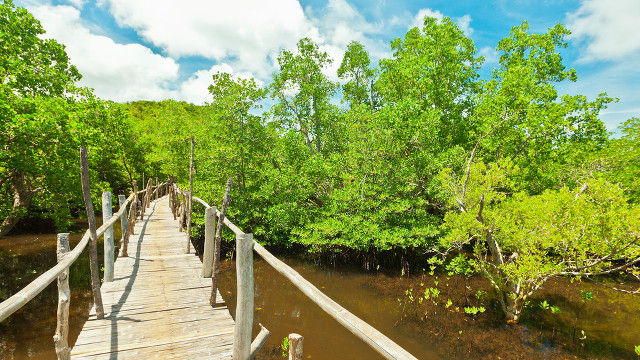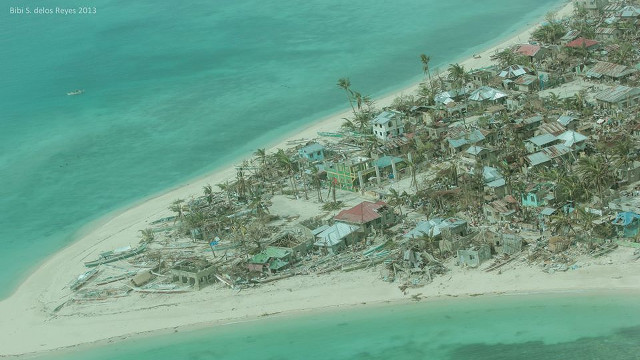SUMMARY
This is AI generated summarization, which may have errors. For context, always refer to the full article.

MANILA, Philippines – It’s time to bring back mangrove forests in Eastern Visayas.
Almost two weeks after Super Typhoon Yolanda (Haiyan) laid waste to much of the region, Environment Secretary Ramon Paje said his department plans to restore mangroves and beach forests in some 380 kilometers of the region’s coastline.
This could protect coastal communities from future typhoons, storm surges (flooding due to abnormal sea level rise) and other extreme weather events. According to scientists and environmentalists, mangroves are able to serve as a “buffer,” shielding human settlements from the maximum strength of storms. (READ: Mangroves are PH’s best shield vs climate change)
A massive tree-planting activity under the government’s National Greening Program (NGP) may take place in coastal areas in Tacloban City and Dulag town in Leyte; towns Guiuan, Llorente and Balangiga in Eastern Samar; and the town of Basey in Samar. Spearheaded by the Department of Environment and Natural Resources, the program will hire locals as a way of providing livelihood while the communities rebuild in the aftermath of Yolanda.
The department is also hoping to convert abandoned ponds owned by the government into mangrove forests.
“The best way to protect the city from storm surge is through mangrove reforestation under the NGP,” said Paje.
Yolanda “has practically seized the nation’s attention to the increasingly important role of mangrove and beach forest belts,” he added.
Reforestation program
The NGP is the country’s largest reforestation program with the aim of reforesting 1.5 million hectares of denuded and degraded forestland all over the country. It is also the DENR’s biggest project receiving the lion’s share of its budget: P6.2 billion or 27% of the department’s total 2014 budget.

Because of Yolanda’s devastation, Paje said the NGP implementation in Eastern Visayas may have to be “reconfigured.” Priority will be given to coastal reforestation over reforestation in upland communities.
But Paje emphasized that successful and effective mangrove reforestation can only happen if the affected shorelines are kept off-limits to informal settlers. This will allow for better maintenance of the forests so the mangroves can grow quickly and robustly.
The DENR is set to conduct ground validation to identify the best areas for mangrove rehabilitation and beach forests. These forests will be planted within the 20-meter zone along the shoreline reserved for public use under the Philippine Forestry Code.
‘Green wall’
Mangrove forests serve as barriers or natural seawalls that protect coastal communities from typhoons and storm surges, phenomena which are now more common because of climate change. Many seaside and island communities in Leyte, Samar, and northern Cebu experienced storm surges, some more than 5 meters high.
Satellite images of Aceh, Indonesia, after the 2004 earthquake-induced tsunami showed that coastal communities with mangroves suffered less damage compared to communities without mangroves.
The mangroves also act as a buffer for sea level rise, a phenomenon also linked to climate change.
“Sea levels rise by two to 3 centimeters every year, but communities don’t feel it because mangroves stop the water from encroaching upon them,” mangrove and biodiversity scientist Filiberto Pollisco told Rappler last October.
“Mangroves in general are one of nature’s best ways of combatting global warming.”
Mangroves are also good at capturing carbon, a major greenhouse gas that causes global warming when it escapes into the atmosphere.
They store up to 4 times more carbon than tropical rainforests, roughly 3 to 4 tons of carbon per hectare per year. This is equivalent to the carbon emissions of two or 3 vehicles.
Unfortunately, the original 500,000 hectares of mangroves in the Philippines has whittled down to 100,000 hectares or less due to coastal development, land conversion and reclamation. – Rappler.com
Bohol mangroves image from Shutterstock
Add a comment
How does this make you feel?
There are no comments yet. Add your comment to start the conversation.